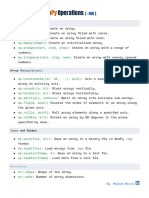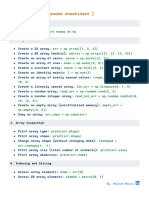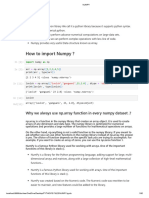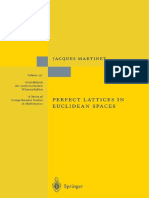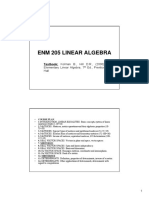0% found this document useful (0 votes)
12 views11 pagesNumPy Concepts and Tricks For Python Programs
NumPy Concepts and Tricks for Python Programs
Detailed about NumPy
Uploaded by
rajven123Copyright
© © All Rights Reserved
We take content rights seriously. If you suspect this is your content, claim it here.
Available Formats
Download as PDF, TXT or read online on Scribd
0% found this document useful (0 votes)
12 views11 pagesNumPy Concepts and Tricks For Python Programs
NumPy Concepts and Tricks for Python Programs
Detailed about NumPy
Uploaded by
rajven123Copyright
© © All Rights Reserved
We take content rights seriously. If you suspect this is your content, claim it here.
Available Formats
Download as PDF, TXT or read online on Scribd
/ 11









